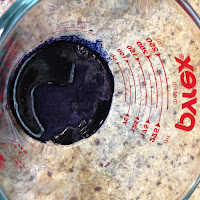 |
| Let's Bone! |
Welcome to The Boneyard. (I'll rightfully attribute this quote to a bro I went on a date with as he tried to coax me into his apartment at the end of the night.) You might be wondering, what's so bad about a crappy plastic skeleton decoration? Sure, it's not physiology class-level accurate, but what does it matter? Well, as I said before, it's not really a crafting supply, but that's not enough to rile me up to write an article about it. In the same Boneyard Collection, we have some other organisms that make me raise an eyebrow.
 Apparently cats and dogs have ear lobe bones, and dogs have nose bones. At the store I said to no one in particular, "Ear lobes don't have bones!" The creators went as far as to make sure the skeletons were at least digitigrade, why ruin it by adding ears? I know, without the ears, idiots would have a hard time recognizing these things as cats or dogs, and we need to sell garbage product to stupid people, so good job Boneyard Collection.
Apparently cats and dogs have ear lobe bones, and dogs have nose bones. At the store I said to no one in particular, "Ear lobes don't have bones!" The creators went as far as to make sure the skeletons were at least digitigrade, why ruin it by adding ears? I know, without the ears, idiots would have a hard time recognizing these things as cats or dogs, and we need to sell garbage product to stupid people, so good job Boneyard Collection.It gets worse. Apparently these birds have human-like sternums. The bird sternum, called a keel, needs to come way the hell out so that their bulky pectorals can attach there, you know, so they can fly. Maybe they can compensate with their bone feathers? I don't know what the thought was here. Most of us have eaten chicken wings before. Bird phalanges are fused together to make a blade-like shape suitable for swimming through the air. These birds have like, one long finger with a bunch of other bone fingers growing out of them. It's so, so wrong.
"But Lou," you say, "it's just a bunch of silly decorations. Who cares? Lighten up! You're being a crabby bitch Lou!" Well, screw you. It's ridiculous how ignorant people are of basic physiology, and this kind of inaccuracy only makes it worse. If there were some parts of the figures that were sort of vague and lacked detail, that would be fine. It would also be fine if there were some parts that weren't to scale, and even some minor inaccuracies would be tolerable. Still, as bad as these models are, I still wouldn't have bothered with this article if it wasn't for this asshole right here.
Spiders don't have bones. Spiders have an exoskeleton. Exo- means outside. Spiders have a protective covering that acts as a skeleton on the outside of their bodies. The exoskeleton is made out of a special substance called chitin. Chitin is very hard and indigestible. Humans, mammals, and other vertebrates have an endoskeleton. Endo- means inside. We have bones made with calcium on the inside of our bodies.
At least some people get it. Glen reviewed this product here.
***** Glen
Everyone knows that a spider has an exoskeleton and is not made up of bones. Other than this obvious inaccuracy, I find this spider rather charming. It was the perfect addition to my annual Halloween party.
Thanks for the review Glen, but really Glen? That doesn't bother you to spend money on such a hot mess, Glen?
That's it, I gotta get out of here and move on.
Bullshit Scorecard
Not a craft. I guess you could add glitter, I don't care.
|
-3
|
I hate holidays
|
-3
|
Number of shits given for accuracy
|
-5
|
Grand Total
|
-11
|



















